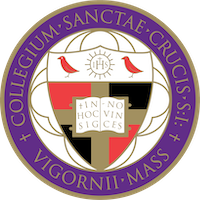After gesticulating with an umbrella and squalling various clucking noises in order to scare a flock of birds into the path of an oncoming Nazi warplane, Sean Connery in Indiana Jones and the Last Crusade, visibly cheerful that his shenanigans brought down the enemy, walked along the beach as the plane smoldered in the background and declared: “I suddenly remembered my Charlemagne. Let my armies be the rocks and the trees; the birds in the sky.”
I was privileged enough to have a few of those “I suddenly remembered my Charlemagne” moments this summer. Like Connery’s character, I don’t leave the library much save the rare occasion to obtain subsistence and attend lectures on historical languages. I, however, had the absolute privilege of digging at an archaeological site this summer at the ruins of Cosa in Italy, where I was able to gain a further understanding of material culture. It was a place, moreover, where I could connect what I had found in the earth to something I read in the classroom.

Cosa, the ruins of which are in the extreme south of Tuscany and about two hours north of Rome, was a Latin colony founded around 273 BCE. The site received additional settlers around 197 BCE—perhaps, as the archaeologist Elizabeth Fentress has suggested, due to a shortage in manpower as a result of the Second Punic War. Further expansion occurred later in the second century, with the construction of a basilica, three temples, and further development around the forum. In 70 BCE, there is evidence of significant violence (such as the skeleton of a murdered man found in a cistern), which the archaeologist Frank Brown concluded was the result of a pirate raid, leading to abandonment of the site.
There was later resettlement under the emperor Augustus and a prosperous Cosa existed until the reign of Nero, when an earthquake damaged much of the town (apparently on the same day Nero put on the toga virilis). The traditional narrative holds that the site faded into obscurity in late antiquity, although there is some recent push back to this notion, as there are signs of occupation in the Late Antique period and then again during the Middle Ages.
The site itself also has a rich history of archeological excavation. Frank Brown led a dig under the auspices of the American Academy in Rome in the 1960s, the findings of which led to Cosa (sometimes mistakenly) being identified as the “ideal” republican colony. Further excavations where carried out by Russel Scott of Bryn Mawr College and later by Elisabeth Fentress with the AAR and British School at Rome. The current excavations, under the direction of Andrea di Girogi of Florida State University and Prof. Scott, are focused around the bath complex—an odd feature given the fact the site of Cosa has very little rain and few natural springs.
The daily routine of excavation essentially involves a lot of digging (who would have thought?). After donning a ridiculous outfit that resembles a cross between Indiana Jones and a cowboy, I would head out to site with a cohort of undergraduate and graduate students, all of us with differing levels of excavation experience. At site, we excavated in trenches, which are employed to observe diachronic change in a specific area, for a few hours.
The actual digging ranges from light brushing (I think what most people, myself in the past included, think archaeology is) to heavy pickaxing (I probably got too much enjoyment out of this. It really solidifies the notion that archaeology is destruction). Various factors, such as the possible presence of architectural elements or artifact dense soil, all go into the trench supervisor’s decision into what method we employ to churn the soil up. From there, we sift said soil which is usually a dull art of discerning tile and other ceramic building materials (which is measured then dumped), from pottery (which is kept, cleaned, and recorded more extensively), from deceptive rocks (which are summarily thrown away for their treachery). The documentation is meticulous; changes in soil color, consistency, frequency of artifacts, presence of new architecture and a bunch of other things that I don’t understand all call for new photos, photogrammetry, and paperwork (this is to counter that whole “archaeology is destruction” thing). The day is broken up with pottery washing, which is a nice time to chat and network with other classicists (and receive sage wisdom from the Ph.D. students).

It was during these four weeks that some pretty neat stuff was found. I myself found various bits of bronze everyday objects that truly remind you that Romans were real people that existed outside of books. A bronze hairpin and elaborate looking key were probably my favorite discoveries. Various inscriptions where found by others. Perhaps the neatest thing, at least in my opinion, was found by one of the trench supervisors. He uncovered a small marble bust of a bearded male deity. I had a bit of a “I suddenly remembered my Charlemagne” moment when it was theorized to represent Dionysus and be the top of a herm. It was hard, at that point, not to recall Alcibiades’ supposed mutilation of the herms. Never before had Plutarch felt more real to me.
I would like to think the Classics Departments of Florida State University and Bryn Mawr College for giving me and other undergraduates such a wonderful opportunity. More information about the Cosa Excavations, including the sponsoring institutions, can be found here. Special thanks are also due to Prof. Smith and Prof. Joseph of Holy Cross for their support in my application to Cosa and for applications to various methods of funding


















